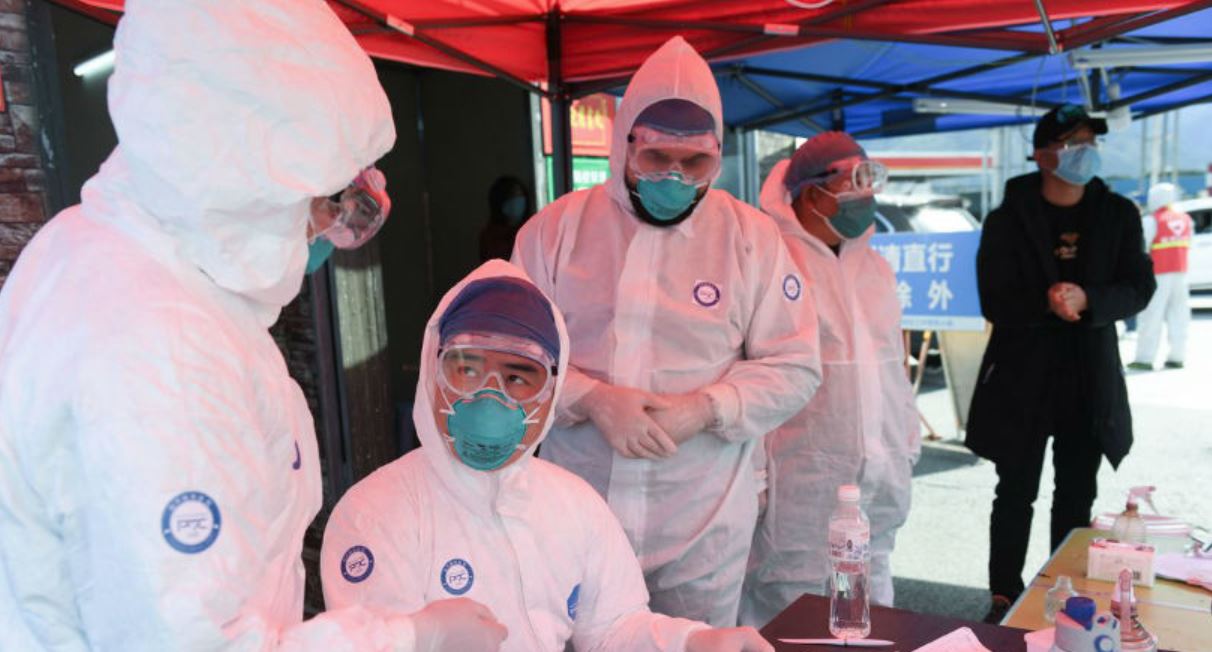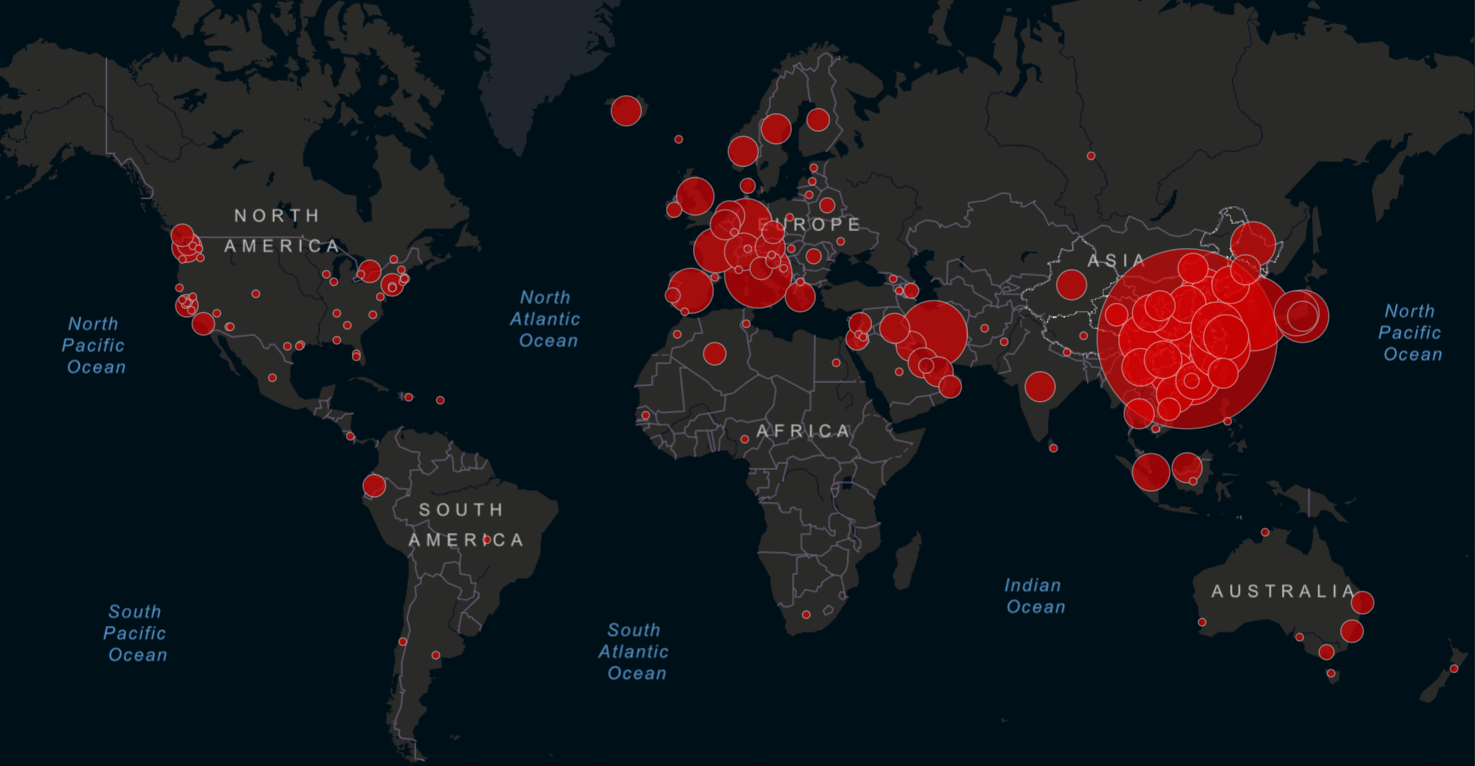
This blog serves a few purposes, but one of the major ones is being a (public) journal. It’s interesting, for example, to look back at my thoughts right after the planes crashed on September 11. The spread of COVID-19 feels like one of those events that we’ll remember for a long time so it felt worthy of at least one post, but this probably won’t be the last one.
First of all, I feel like me calling it COVID-19 instead of “the coronavirus” is similar to my failed stand on calling drones by their proper name of “quadcopters.”
With that out of the way, let’s talk about how we got to this point. Right around the end of last year, it was becoming clear that something was happening in Wuhan, China. As I traveled to Israel around the end of January, there were a few thousand cases in China, and while I was in Israel, the first case was identified in Everett, WA.
From that point, it has continued to spread more throughout China and around the world. While the flu has hospitalized 3-4 times as many people as COVID-19 so far this year, there are two things that make COVID-19 scarier:
- The transmission rate appears to be a bit higher than the flu with around 2.2 people catching it for every 1 person who gets it.
- The death rate is much higher. COVID-19 is killing around 3.4% of the people who catch it and the flu only kills about 0.1%.
That’s what we know today. One challenge is that new data is arriving all the time as the world’s scientific community joins forces to figure this virus out. The numbers above might be totally wrong because we still don’t have a good idea of how many people have caught it. There are some theories that say 40-70% of people have already been exposed to the virus while others are saying that only a tiny fraction of people have been exposed. Or if we ignore that question, it makes sense that the virus is more fatal to the elderly and immuno-compromised, but why are kids getting infected at an extremely low rate? Is it because there’s something special about the virus? Do they have an immunity? Or are they always so sniffly and coughy that we don’t notice?
If COVID-19 really would take out 2% of the population and if we can’t stop it, that translates to 10s of millions of people dead. That could decrease dramatically if we take drastic measures and quarantine everyone. But every day you do that spreads panic and destroys the economy, so nobody wants to make that call. But if you want it to be effective, it needs to happen early or else it doesn’t help as much. There’s just not enough information to know what is the right decision.
As of Wednesday, the county where we live (King County) recommended that employers make it easy for employees to work from home if possible. My company quickly followed up with an email to all employees in this region asking us to default to working from home for the next three weeks. Our school district also closed for at least the next two weeks. Elijah goes to school farther north so those schools aren’t closed yet, but it’s not hard to imagine that they will follow in this path.
As I mentioned early, we’re the epicenter of the outbreak in the United States so the responses here are the most drastic in the country. The first deaths were literally a few miles from my house. As I drive home, there are news crews reporting in front of the school right across the street from my house.
Thankfully at this point businesses are still open and the supply chain is still flowing. Grocery store shelves are full (as long as you’re not looking for toilet paper or hand sanitizer) and gas stations have plenty of fuel. Driving around feels weird because traffic is so light with many people staying home, but everything else is fairly normal. It’s different from the shortages and quiet that you get when there is a snowstorm or power outage.
We ended up visiting the doctor today for a cough that Elijah’s had for weeks which morphed into a fever yesterday. Thankfully the fever disappeared quickly but the doctor still wanted to check him for pneumonia which can hit kids quickly. Both the nurse and the doctor wore face masks and plastic face shields. The appointment basically just confirmed that Elijah doesn’t have pneumonia or the flu and we can just watch it for a while. Oh and if you’re curious, our doctor is still flying out for a trip on Friday and has no concerns about doing so.
The news is flooded with stories ranging from speculation to useful facts as every website tries to get as much click-bait out there as possible. This is big money. My recommendation is to stick to sources like the CDC and WHO or simple, fact-based info like this handy dashboard from Johns Hopkins. Otherwise it’s easy to get sucked into a vortex of anxiety reading article after article about the unknowns and what-ifs.

I admit to getting sucked into that vortex as I think about how to care for my family through this situation. But the other night after one of those sessions of reading a few too many random articles, I laid in bed listening to the frogs croaking. They have no idea what’s going on, nor would they care if they did. I was reminded of the words of Matthew 6:
25“Therefore I tell you, do not worry about your life, what you will eat or drink; or about your body, what you will wear. Is not life more than food, and the body more than clothes? 26Look at the birds of the air; they do not sow or reap or store away in barns, and yet your heavenly Father feeds them. Are you not much more valuable than they? 27Can any one of you by worrying add a single hour to your life?
28“And why do you worry about clothes? See how the flowers of the field grow. They do not labor or spin. 29Yet I tell you that not even Solomon in all his splendor was dressed like one of these. 30If that is how God clothes the grass of the field, which is here today and tomorrow is thrown into the fire, will he not much more clothe you—you of little faith? 31So do not worry, saying, ‘What shall we eat?’ or ‘What shall we drink?’ or ‘What shall we wear?’ 32For the pagans run after all these things, and your heavenly Father knows that you need them. 33But seek first his kingdom and his righteousness, and all these things will be given to you as well. 34Therefore do not worry about tomorrow, for tomorrow will worry about itself. Each day has enough trouble of its own.

COVID-19: Part 2
On Friday I woke up to the news that someone in our division had tested positive. The company notified everyone who was likely to have been in close proximity to him. It was in another building so it’s highly unlikely that I crossed paths with him, but it does make the “everyone work from home” recommendation seem like more of an obvious good move.
The first couple days of working from home were less productive than normal, but I think our team is getting settled in. I was asked to collect some best practices and set expectations about how we will interact and stay in our highly-collaborative mode even though we’re separated. Thankfully, collaboration tools have gotten a lot better in recent years, and while there are a lot of things I’d change about Microsoft Teams, it really is an excellent service.
Over the weekend, life continued to be pretty normal. We met up with Tyla’s family on Saturday to celebrate Logan’s birthday and then we went to Pizza Coop for dinner. I wasn’t sure what to expect there, but it felt like a very normal Saturday evening crowd. Church was well-attended on Sunday as well. The grocery stores are well-stocked, and other than news stories and less traffic than normal, there’s very little to indicate that anything odd is going on.
But it’s that normalcy that feels the strangest. Major snowstorms and power outages have a visible component and it’s easy for me to understand what I can do to help keep my family safe. But in this case, it’s a silent virus floating around. Could we do everything as normal and not be affected? Have we already come in contact with it and not caught it? Are we on the brink of exponential growth in the infection rate? None of these things are knowable or measurable. Life goes on except that every time someone coughs, heads snap in their direction and people scoot away.
It remains to be seen whether our current efforts will be effective in stopping the spread of COVID-19, but I’m also interested to see what effect our improved hygiene has on standard illnesses like colds and the flu. Will those numbers be noticeably lower because we’re all washing our hands more often and staying home even when we have a little cough? I’d like to think that improved hygiene will be something we all take away from this, but the reality is that we’ll probably revert to our old ways a few months after this scare is over and we’re on to the election coverage.